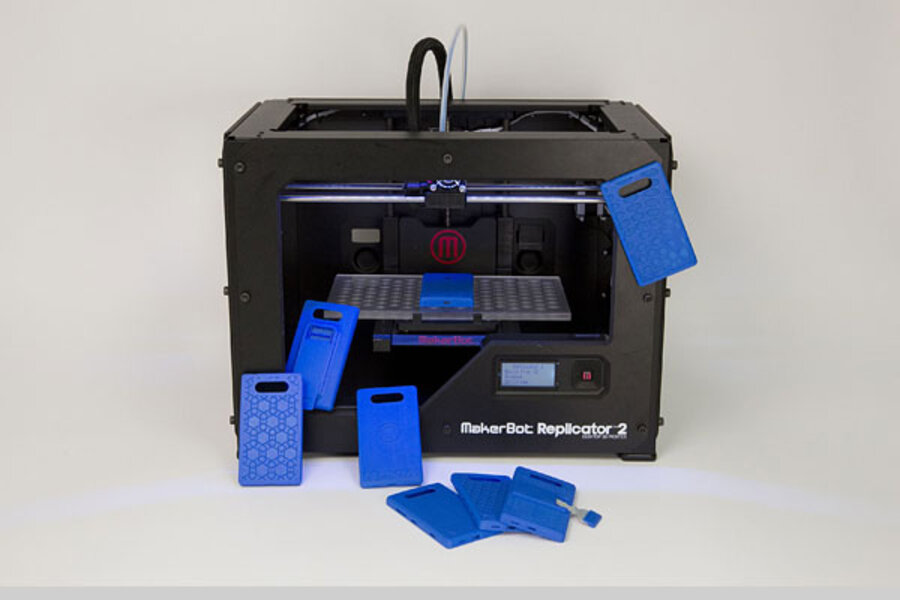Where can you find 3-D printers? Try your local library.
Loading...
The invention of the 3-D printer has the potential to revolutionized the way people create, but the printers have two major hurdles: access and affordability.
While there are plenty of companies that have invested in the expensive machines and rent them for public use, there is another place to interact with the tech: local libraries.
According to the latest data from the American Library Association (ALA), 250 US public libraries currently provide access to 3-D printers – sometimes for free. And according to Alan Inouye, director of the ALA office for information technology policy, and Charles Wapner, ALA information policy analyst, the number of libraries that offer access to 3-D printers has likely grown since the survey was taken in 2013.
Mr. Inouye says that libraries have always had a “tradition of bringing tech to the masses,” from typewriters to early personal computers and now 3-D printers.
Digitalization "swept through the music and the book industry, and now it's reached the physical economy, the economy of tangible things,” says Mr. Wapner. And with 3-D printers, you "can bring pretty much anything you can imagine into the physical world through digital content.”
Inouye thinks of libraries as a “complement” to formal education, but this more informal approach to learning is not just for kids. They say that public access to 3-D printers provides great opportunities for entrepreneurs and small business owners to use the machines.
“One prong of our leadership [is providing access, but] we’re also teaching people how to use the machine,” says Wapner. “Then we’re also helping people build the skills and the competency they need to compete in today’s economy through 3-D printing, as well.”
Inouye compares the adoption of 3-D printers to the early days of e-books. Before the Amazon Kindle, digital books were a niche hobby, but after the online retail giant introduced its digital reader, the market became flooded with new devices. The ALA sees 3-D printers following a similar trajectory. In January, the organization released a white paper (PDF) addressing concerns over legal questions and education for librarians.
“As librarians, we’re finding ourselves having to broaden our [information technology] lens beyond the copyright law to study some of these other IT contexts – mainly patent and trademark – and that’s something that we as librarians [think is] an important point we want to drive home, to study these contexts,” says Wapner.
Inouye wonders if copyright laws will scare people away from 3-D printer. He wants librarians to understand where their "rights begin and end as users,” so people aren’t frightened into inaction when it comes to creating.
But the biggest issue for libraries has been the same for years: resources. The ALA says libraries need the provisions to support both analog content and the high-tech tools.
“There is a big challenge within libraries in terms of the expertise and the resources to support all these things,” says Inouye. “So we, the library community, are reaching out to organizations, to partners from corporations to the government, [for not only] resources, but also for partnership to work together, to try and provide the best we can to communities.”
Both Inouye and Wapner see great things happening between schools and the private industry, but they believe that libraries should also be considered as part of the larger picture for the expansion of this technology.
“This is when we’re really trying to raise our hand and say, ‘hey, look at us libraries! With nothing more than a library card and the power of your own imagination, you can be an engineer,’ ” Wapner says.






